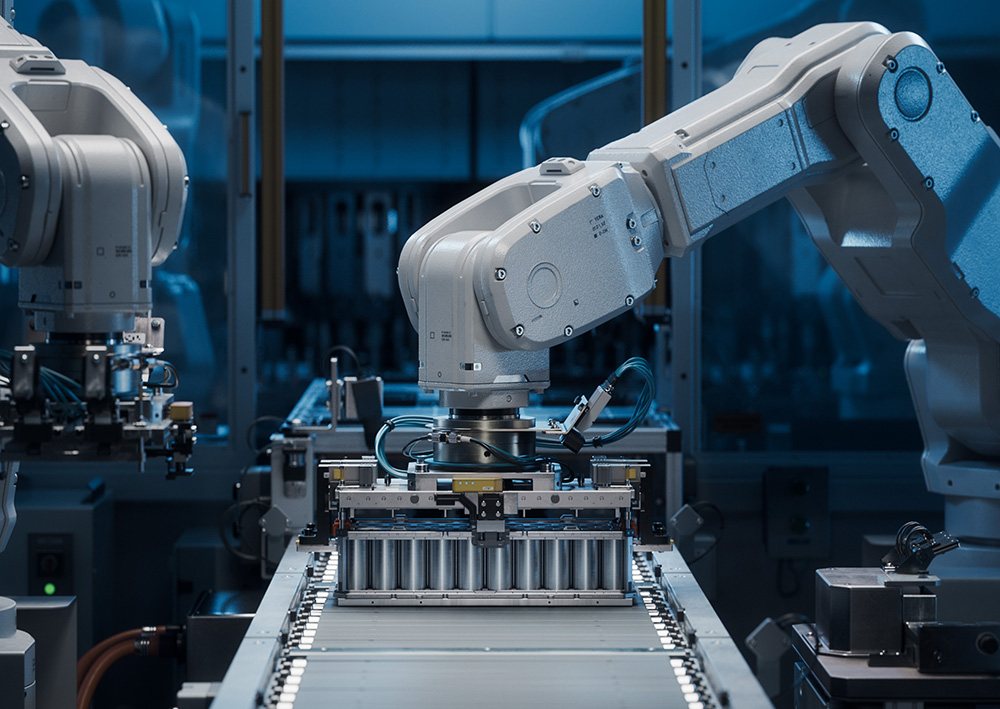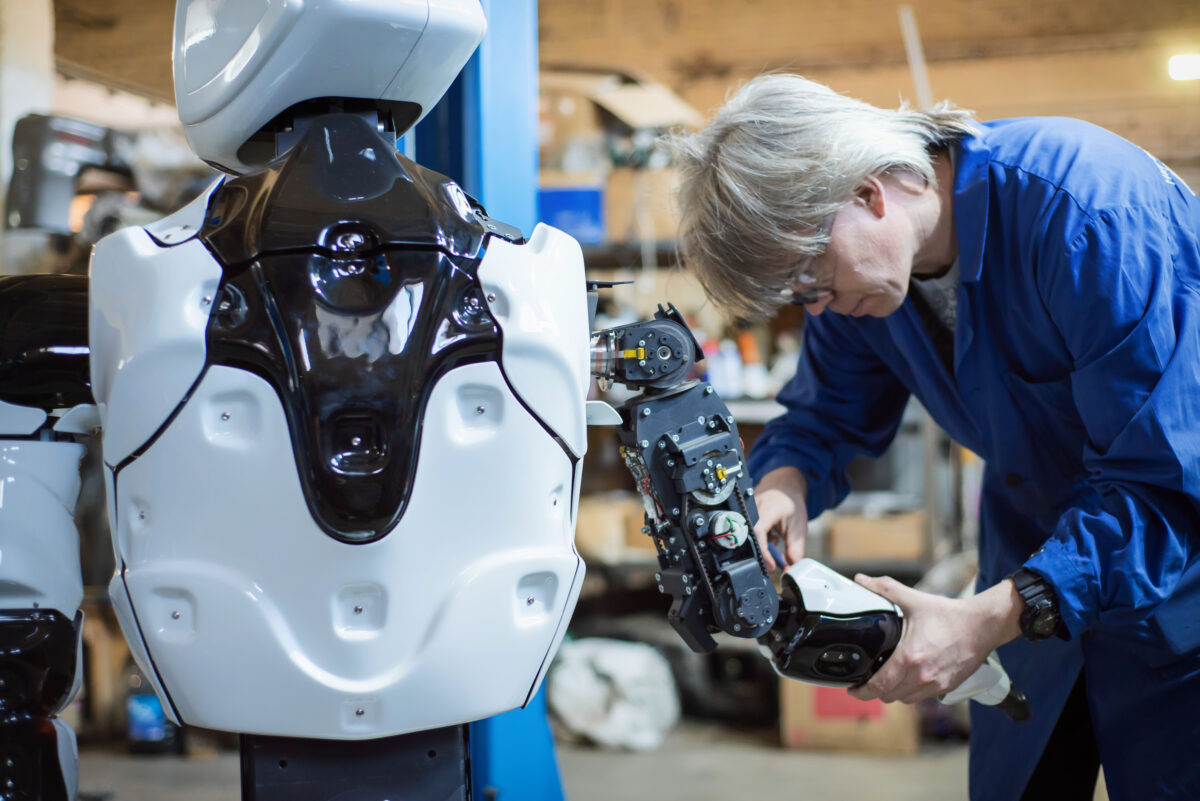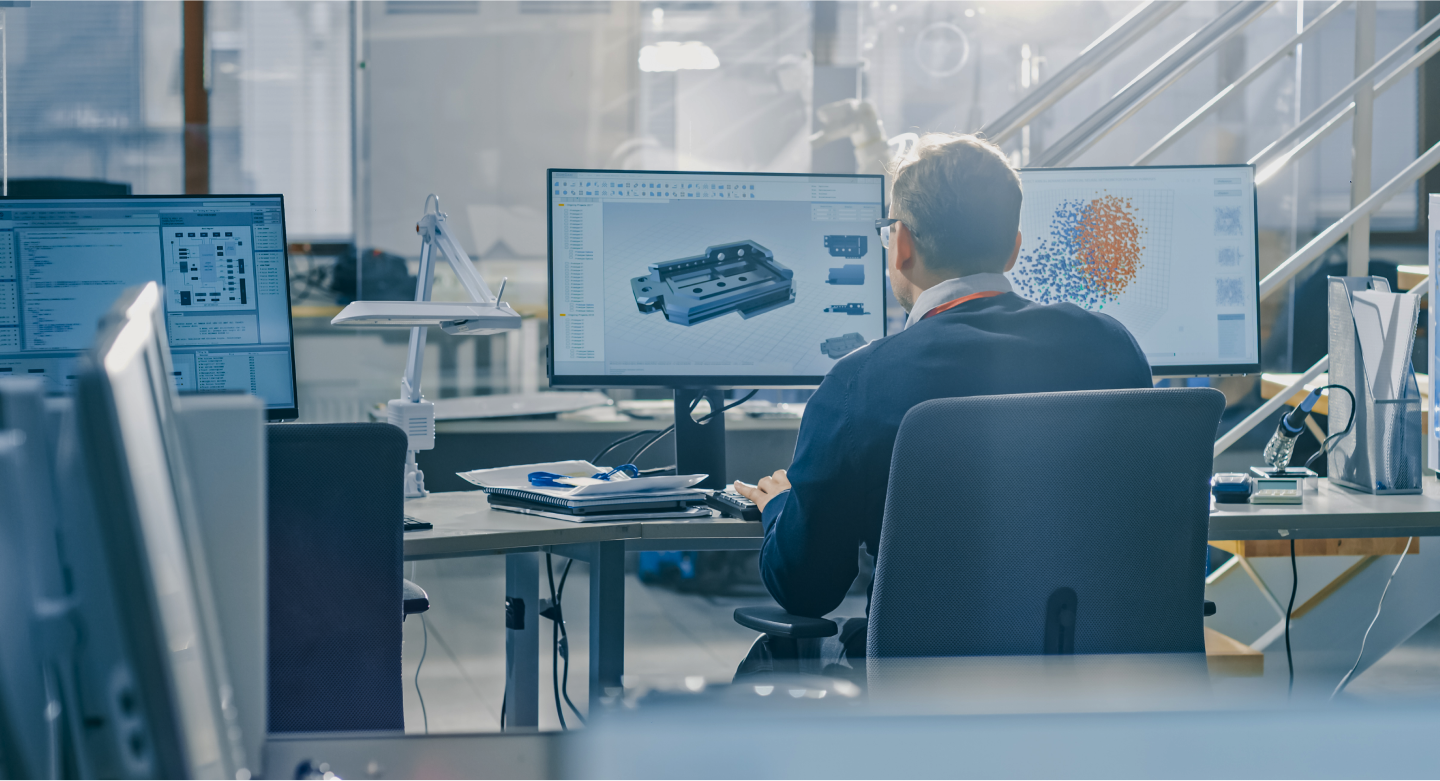Industrial robotics manufacturers face numerous challenges, including the complexity of designing and assembling advanced robotic systems, ensuring precision across highly intricate workflows, and minimizing costly production errors.
Additionally, maintaining consistent quality while scaling production is difficult due to the need for accurate, up-to-date documentation and strict compliance with industry standards.
Manufacturers must also address the ongoing maintenance of robotic systems, which requires proactive and predictive solutions to prevent downtime and ensure long-term reliability.
Overcoming these challenges is key to driving innovation, efficiency, and competitiveness in the rapidly growing robotics industry.
The industrial robotics industry faces significant challenges in documenting complex manufacturing processes, including intricate assembly steps, harness designs, testing procedures, and software integration.
These processes require precise, up-to-date documentation to ensure accuracy, compliance, and efficient maintenance.
PROMAI’s Gen addresses these issues by automating the creation of standardized, executable documentation directly from engineering data.
With real-time updates, process verification, and clear work instructions, ROMAI’s Gen eliminates errors, streamlines production, and ensures seamless maintenance, enabling robotics manufacturers to improve efficiency, reduce downtime, and accelerate time-to-market.


Industrial robotics manufacturing presents numerous challenges, including complex assembly processes, high precision requirements, error-prone manual operations, and the need for strict quality control.
Ensuring real-time process validation and minimizing production errors are critical to maintaining efficiency and meeting industry standards.
PROMAI’s Shield provides a robust solution by offering real-time, step-by-step process verification and dynamic scheduling.
Its advanced monitoring and automated alerts help prevent errors, ensure consistent quality, and optimize production workflows, enabling manufacturers to achieve error-free operations and maximize productivity.
The industrial robotics industry faces significant supply chain challenges, including managing the availability of specialized components, coordinating complex workflows across differing workstations, and minimizing delays that can disrupt production.
PROMAI’s Shield addresses these issues by enabling dynamic scheduling and real-time process monitoring across all workstations.
By ensuring that each workstation operates with the right components at the right time and validating every step of the process.
Industrial robotics assembly involves highly complex processes across multiple workstations, requiring precise coordination, strict quality control, and error-free execution.
PROMAI’s Shield offers an atomic, verifiable step-by-step solution that ensures each task at every workstation is executed accurately and validated in real-time.
By providing clear, executable instructions and instant feedback, PROMAI’s Shield helps streamline the assembly process, reduce errors, and maintain high-quality standards across differing workstations

Before a robot can be delivered to the customer, it must undergo a thorough certification process.
This involves comprehensive testing to ensure compliance with safety, performance, and operational standards set by relevant regulatory authorities.
WizGen streamlines this process by automating the creation of checklists for all required tests, while WizShield ensures that each test is performed accurately and in full alignment with regulatory requirements.
At various stages of production, rigorous testing and quality assurance measures are implemented.
This includes non-destructive testing (e.g., X-ray inspection, ultrasonic testing) to ensure structural integrity, functional testing of systems and equipment, and overall performance testing.
Any issues or defects identified during testing are addressed and rectified.
machines and robots operators develop maintenance plans based on regulatory requirements, manufacturer recommendations, and their own maintenance programs.
These plans outline scheduled maintenance tasks, including routine inspections, preventive maintenance, and component replacements.
PROMAI’s WizGen automates the creation of maintenance, fault isolation procedures that are complete and validated.
Maintenance and fault isolation are crucial aspects of robotics production to ensure the safe and efficient operation of assembly lines.
Maintenance includes routine inspections, servicing, repairs, and the replacement of components to keep the manufacturing process in optimal condition.
Fault isolation, meanwhile, involves identifying and troubleshooting issues or malfunctions within the robotic systems or components.
Scheduled maintenance involves routine inspections and servicing at specified intervals.
This includes checks of systems, structures, engines, and other components to ensure they are functioning properly and within acceptable limits.
Regular maintenance tasks may include lubrication, filter replacement, fluid checks, and system functional tests.
Integrating WizShield tracks the different steps and alerts for any maintenance procedure that should be performed, Using WizOpt will maximize operation time of each robot component.
Unscheduled maintenance occurs when a robotic system encounters an unexpected issue or failure.
This could result from a system malfunction, component failure, or another unforeseen event. Technicians assess the problem, troubleshoot it, and perform the necessary repairs to restore the system to optimal working condition.
PROMAI’s WizSuite generates comprehensive fault isolation procedures, enabling quick identification and isolation of issues. This capability significantly reduces repair time, streamlining maintenance for the entire fleet.

Fault isolation in the industrial robotics world presents significant challenges due to the complexity of robotic systems, intricate interdependencies between hardware and software, and the high variability of operating environments. Identifying the root cause of a fault requires in-depth knowledge of mechanical, electrical, and control systems, making the process time-consuming and prone to human error.
Various diagnostic tools, such as built-in test equipment (BITE), computerized maintenance management systems (CMMS), and diagnostic manuals, are used to assist in the fault isolation process.
PROMAI’s Field innovative Fault Isolation solution addresses these challenges by utilizing smart decision trees and ultra-fast diagnostic tests to pinpoint issues rapidly. This solution guides technicians through atomic, verifiable corrective steps, ensuring precise fault resolution with minimal downtime, ultimately improving system reliability and operational efficiency.
Once the fault is isolated, technicians use their expertise and technical manuals to diagnose the specific problem and develop a repair plan. This may involve replacing faulty components, adjusting settings, repairing wiring or connections, or recalibrating systems.
Technicians follow manufacturer guidelines and industry best practices to ensure accurate and effective repairs. PROMAI’s Field using the data aggregated by Gen assists in timely troubleshooting of any problem raises.


PROMAI resolves testing issues in industrial manufacturing by embedding measurable tests and verifiable checks at every step of the production process.
By integrating real-time, automated testing—ranging from non-destructive methods like X-ray and ultrasonic inspections to functional and performance tests—PROMAI ensures early detection of defects and process deviations. Each step is validated with precise metrics, enabling immediate issue resolution and guaranteeing the highest quality output.
This approach minimizes rework, reduces waste, and ensures seamless production flow with reliable, error-free results.
PROMAI’s Gen solution addresses the complexities of industrial robotics compliance documentation by automating the generation of precise, verifiable, and up-to-date records throughout the production process.
PROMAI’s Gen captures validated manufacturing data, including design specifications, test results, safety checks, and maintenance procedures, and transforms it into complete, structured compliance documentation.
This ensures that every regulatory requirement is met with minimal manual effort, reducing errors and streamlining the audit process.
By providing real-time, traceable documentation, PROMAI’s Gen ensures that companies maintain full compliance while accelerating production workflows and reducing operational costs.


visibility_offDisable flashes
titleMark headings
settingsBackground Color
zoom_outZoom out
zoom_inZoom in
remove_circle_outlineDecrease font
add_circle_outlineIncrease font
spellcheckReadable font
brightness_highBright contrast
brightness_lowDark contrast
format_underlinedUnderline links
font_downloadMark links